Mastering Screen Recording on Your Android Device
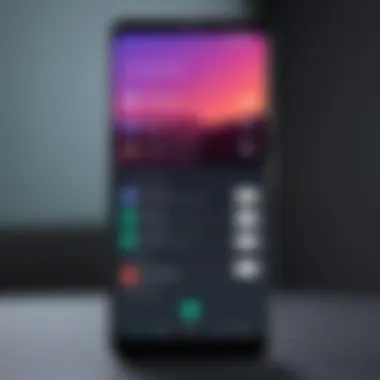
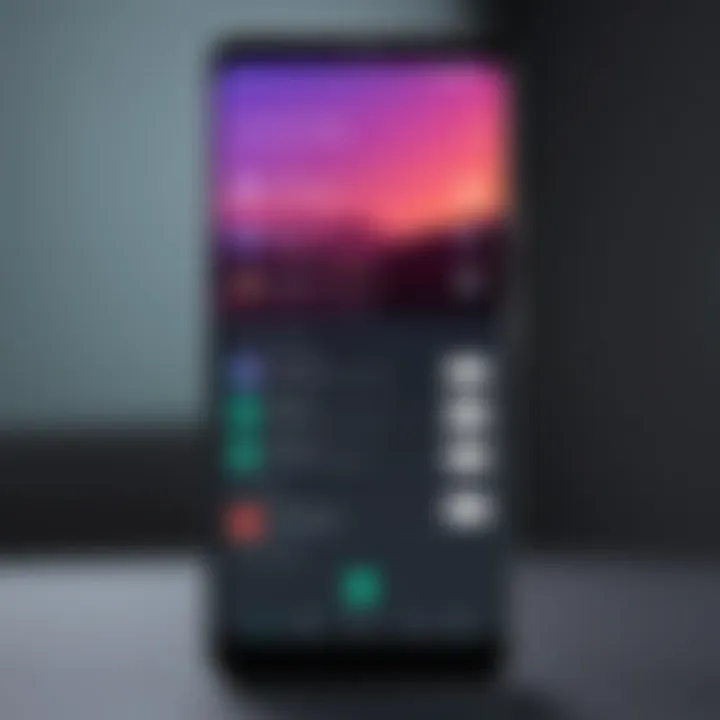
Intro
In today's digital world, recording your phone screen can be a valuable skill for many users. Whether you want to make tutorial videos, save gameplay, or document a specific app's functionality, knowing how to record your Android screen is essential. Thankfully, the process is straightforward, with several options available based on your device's specifications and personal needs.
This article aims to provide a complete guide to recording your phone screen on Android. We will explore built-in features, recommend useful third-party applications, and share tips to optimize your recording for clarity and effectiveness. This guide is tailored to cater to both novice and seasoned users.
Overview of the Technology
Screen recording technology allows users to capture not only visuals but also audio from their devices, making it easier to share content and create tutorials. Many Android devices come equipped with built-in screen recording features, offering basic functionalities suitable for standard tasks.
Key Specifications
Some of the significant specifications related to screen recording on Android devices include:
- Resolution: The quality of the video recording is determined by its resolution, commonly available at 720p, 1080p, or even 4K in some high-end devices.
- Frame Rate: A higher frame rate, such as 30fps or 60fps, results in smoother video playback, which is especially important for gaming.
- Audio Options: Users can often choose between capturing external audio, internal audio, or both during recording.
Unique Selling Points
The advantages of screen recording tech on Android include:
- Accessibility: Most modern Android devices have built-in features, eliminating the need for additional downloads.
- User Control: Users can typically pause, resume, or stop recordings with ease, giving full control over what content is captured.
- Editing Features: Some built-in options provide simple editing tools, allowing users to trim or modify recordings right after finishing.
Design and Build Quality
When discussing design and build quality related to screen recording on Android, it's essential to consider the physical device you are using.
Material Used
Android phones are crafted from a variety of materials such as glass, aluminum, or plastic. The material affects not only the overall durability but also how the device copes with stress during extended screen usage. Features like a modern glass back or sturdy aluminum frame enhance user trust and longevity in performance.
Ergonomics and Usability
Usability is crucial when operating screen recording functions. Most Android devices have well-placed buttons for quick access to the screen recorder, making it easy to initiate a recording without interruption. The touchscreen is often sensitive enough to handle actions efficiently, which is vital when multitasking during a recording session.
End
Recording your phone screen on Android is an accessible and valuable skill, whether for personal use or professional purposes. By understanding the technology, features, and usability of the devices, you can optimize your recording experience. Each method has unique advantages that cater to different user needs, ensuring everyone can find a solution that works for them.
Foreword to Screen Recording
Screen recording has become an indispensable tool in our digital lives. As mobile devices gain more power and versatility, the need to capture what happens on a screen has risen significantly. This section aims to explain the concept of screen recording and why it holds importance today.
Defining Screen Recording
Screen recording refers to the process of capturing video footage of anything displayed on a device's screen. It can include actions such as scrolling through apps, demonstrating features, or guiding users through a particular task. Screen recordings can capture audio as well, allowing users to create tutorials, presentations, or even gameplay footage.
The technology employs various methods to save the display's content, typically providing options for user-defined parameters like resolution and sound source. Understanding this basic definition sets the stage for grasping the nuances of recording on an Android device.
Importance of Screen Recording
Screen recording serves numerous purposes. First, it is an effective way to document and share instructions or tutorials. Whether it's demonstrating how to use certain apps or explaining a complex process, a visual guide can be invaluable. Additionally, it allows for better communication in both personal and professional settings.
For educators, screen recording is a powerful way to create engaging lesson materials. In the realm of customer support, representatives can quickly show solutions to their clients. Furthermore, content creators leverage screen recordings to produce captivating tutorials or walkthroughs for their audience.
"Screen recording enhances the ability to convey complex information simply and effectively."
As technology evolves, so too do the applications of screen recording. With the rise of remote work and online learning, mastering this capability can provide significant advantages. Overall, understanding screen recording and its benefits will empower Android users to utilize this functionality effectively.
Understanding Android Screen Recording
Understanding Android screen recording is essential for users who seek to capture their mobile device activities. This knowledge not only amplifies user experience but also aids in documentation, education, or simply sharing moments with others. As Android evolves, so does its screen recording capability. Knowing the intricacies of this functionality enhances usability and effectiveness.
Overview of Android Versions

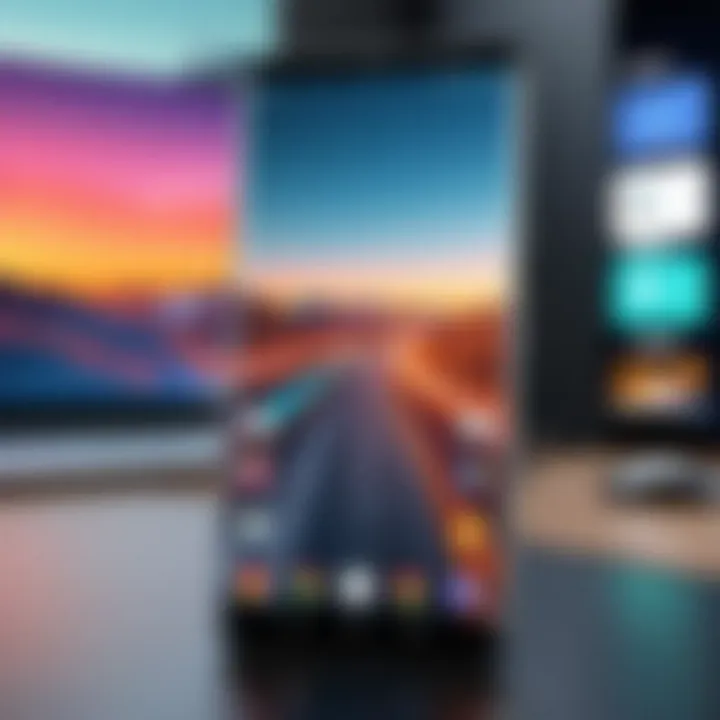
Android has witnessed significant evolution since its inception. Each version adds features and optimizations, impacting screen recording capabilities. For example, Android 10 introduced built-in screen recording features, eliminating the need for third-party apps for many users. Older versions, such as Android 9 and below, rely heavily on external applications. Thus, the version of Android significantly determines how users approach screen recording, whether they utilize built-in tools or third-party options.
Device Compatibility
Device compatibility plays a vital role in screen recording. Not all devices run the same version of Android, and this can limit features and performance. High-end models often come equipped with advanced hardware and software optimizations, enhancing the recording experience. On the other hand, budget devices may face performance issues or have limited recording options.
When considering device compatibility for screen recording, it is also important to check for specific manufacturer modifications. For example, Samsung devices may have unique screen recording settings compared to devices from Xiaomi or OnePlus. Understanding your device’s capabilities is critical for an effective recording experience, ensuring that you select the best tools to suit your needs.
Always verify your device's specifications and Android version to maximize your screen recording experience.
Built-in Screen Recording Features
Screen recording has become an essential feature for many Android users. Built-in screen recording functionality adds significant value, making it easier for users to capture and share their screens for various purposes, such as tutorials, gameplay, and troubleshooting. Users benefit from this feature as it often does not require additional installations, ensuring quick and user-friendly access.
Accessing Native Recording Tools
To access the native screen recording tools on an Android device, the approach can slightly vary based on the manufacturer and version of the operating system. Older Android versions may not have this feature, whereas newer ones often include direct options. Users can typically find the screen recording functionality in the Quick Settings menu. If it is not visible there, they can tap on the pencil icon to edit the menu and add the screen recording option. This ensures that users can start recording their screen with ease when needed.
Using Quick Settings Menu
To utilize the quick settings menu for screen recording, simply swipe down from the top of the screen. Look for the screen recorder icon, which may be labeled as "Screen Record" or an image representing a recording device. Activating this feature usually requires just one tap. The intuitive design allows users to access the screen recorder without navigating multiple menus, making it a fast solution for capturing their activity.
Configuring Recording Settings
Configuring the recording settings allows users to optimize the quality and features of their recordings. This includes adjusting various aspects such as resolution, audio input, and storage location.
Resolution Options
Resolution is a critical aspect of screen recording. Android offers various options under resolution settings. Higher resolutions lead to more detailed recordings but can consume more storage space and may require better processing power.
Choosing a resolution that balances quality and performance is vital. A standard choice for many users is 1080p, as it provides clarity without excessive resource use. The unique feature here is the ability to change resolutions depending on the purpose of the recording. If the recording is to be shared online, higher resolutions are usually preferred; if it's just for personal notes, lower resolutions could suffice, conserving space.
Audio Settings
Audio is another important element in screen recordings. Many Android devices allow users to record internal sound, external sound, or both. This flexibility is beneficial for creating rich content that includes commentary or sounds from the device itself. Users often prefer internal sound recording when demonstrating apps or games. However, external sound recording may be ideal for tutorials explained by users. The unique characteristic of audio settings is this choice. Users should consider what they aim to achieve with their recordings before selecting the appropriate option.
Storage Location
The default storage location for recorded screens can typically be configured as well. Depending on the device, users may have the choice of local storage on their internal memory, external SD card, or even cloud storage solutions.
Choosing the right storage location contributes to organized files and managing storage space effectively. Many users prefer saving recordings to external storage to avoid consuming internal memory, especially when recording long sessions. This versatility can prevent interruptions during lengthy recordings, thereby enhancing overall user experience.
Third-Party Applications for Screen Recording
In the growing world of mobile technology, recording your phone screen has become a vital feature for many users. While Android devices often come equipped with native recording options, the functionality can be limited. This is where third-party applications play a significant role. They enhance the recording experience by offering additional features, flexibility, and capabilities that may not be available through built-in tools.
Choosing a third-party application can help in achieving higher quality recordings or specific requirements, such as adding personal commentary or incorporating video editing tools right within the app. Though these apps vary in price, usability, and functionality, they each bring valuable attributes to the users. Knowing how to select the right app can significantly impact the quality and effectiveness of the screen recordings.
Selecting a Recording App
When selecting a screen recording app, consider the following factors:
- User Interface: A clean and intuitive interface can make recording easier, especially for beginners.
- Features: Look for features that meet your specific needs, such as editing tools, resolution settings, and audio input options.
- Ratings and Reviews: User feedback can provide insight into how well the app performs and any potential issues.
- Compatibility: Ensure that the app functions well with your specific Android device model and version.
Popular Screen Recording Apps
AZ Screen Recorder
AZ Screen Recorder is one of the most popular choices among mobile users. Its key characteristic is its ability to record high-quality video without requiring root access. This means users can record their screens easily and safely. A standout feature of AZ Screen Recorder is the capacity to include external audio from the microphone, which is essential for tutorials or commentary. While user-friendly, it is important to note that the free version may include a watermark on the recordings. However, users can opt for the premium version to remove this limitation, offering flexibility based on user needs.
Mobizen Screen Recorder
Mobizen Screen Recorder is another strong contender in this domain. This app also offers high-resolution recording and a simple interface. What sets Mobizen apart is its edit function, allowing users to trim or add effects after recording. Furthermore, it provides a unique feature called "Facecam," where users can include their face as a small overlay during the recording. This is particularly useful for gaming streams or video tutorials. The downside may be the occasional ads in the free version, which could disrupt the recording experience.
DU Recorder
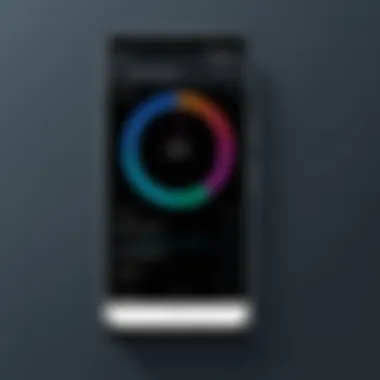
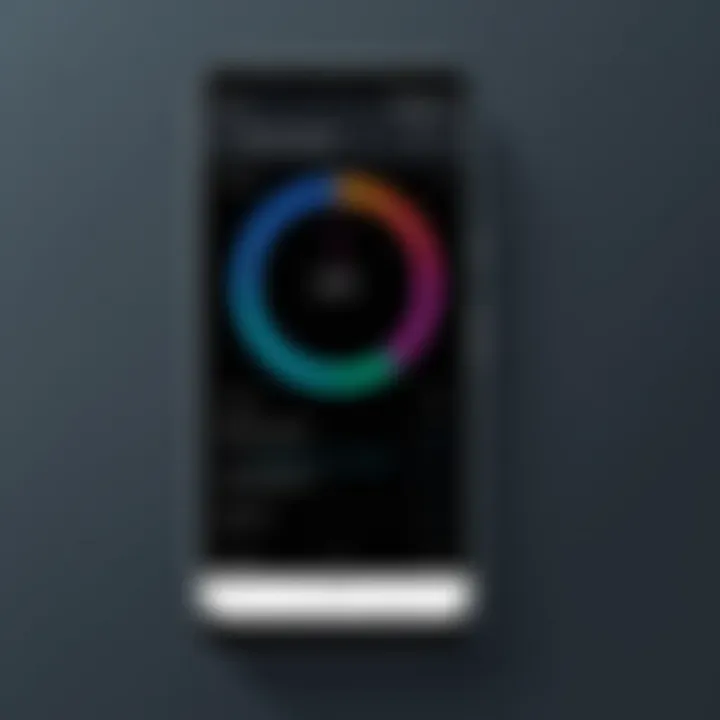
DU Recorder is known for its comprehensive features that go beyond simple screen recording. Users can expect high-quality recordings along with options for live streaming directly from the app. One of its main advantages is the in-app video editing tools, which can help users create more polished content. On the flip side, users have reported occasional performance issues on certain devices, which could affect the quality of recordings.
Installation and Setup Process
To install a third-party screen recording app, follow these general steps:
- Open the Google Play Store on your Android device.
- Search for the desired recording app (e.g., AZ Screen Recorder, Mobizen, or DU Recorder).
- Tap on the Install button and wait for the app to download.
- Once installed, open the app to customize settings according to your needs, such as resolution or audio input.
- Follow any on-screen prompts necessary for the initial setup.
After installation, you’re ready to begin recording. Each app will have its unique features for starting and stopping recordings, so familiarize yourself with the interface to maximize the recording experience.
Note: Ensure your device has sufficient storage before recording to avoid interruptions.
Recording Your Screen: Step-by-Step Process
Recording your screen on an Android device is a practical skill. It allows users to capture content for tutorials, share gameplay, or save important information. This section provides a clear guide on how to proceed with recording your screen effectively. By following these steps, you can ensure that your recordings are high-quality and informative.
Starting the Recording
To start recording, first, locate the built-in screen recorder in your Android device. Depending on your version, it may be available in the quick settings menu.
- Swipe down from the top of your screen.
- Look for the 'Screen Record' option. If you don’t see it, you may need to edit the quick settings to add it.
- Once you find it, tap it to initiate the recording process.
You may be prompted to choose audio settings. Decide whether you want to record internal audio, external sound, or both. Selecting the proper option is crucial for capturing clear audio in your video. After configuring these settings, confirm to begin recording.
Navigating During Recording
When the recording starts, a small overlay may appear on your display. This overlay often contains controls for pausing or stopping the recording.
- During recording, navigate your device as needed.
- Open apps, browse the web, or demonstrate features.
Keep in mind that everything shown on your screen will be recorded. Therefore, avoid accessing any sensitive information. Your actions are captured in real-time, making it critical to only showcase content relevant to your recording’s purpose.
Stopping the Recording
Stopping the recording is straightforward. You can either return to the overlay and click the stop button or swipe down to the quick settings menu and tap 'Stop'.
After you stop the recording, an option to view your video will often appear. Make sure to check the recording for quality and clarity. It is important to confirm that the video meets your expectations before sharing it with others or making any edits.
Keep in mind: Always review your recordings. This practice helps ensure that you capture all necessary content and maintain high standards in the output.
With these steps, you should now be capable of efficiently recording your Android screen. This ability can enhance your communication and creativity when producing content.
Post-Recording Actions
After completing a screen recording, it's crucial to understand the actions to take next. Post-recording actions influence the usability of your recorded content significantly. This section will cover important aspects like reviewing your recordings, editing them for precision, and sharing options to distribute your recordings effectively. Each of these actions adds value to the recordings and enhances overall user experience.
Reviewing the Recording
Reviewing your recording is the first step after stopping the process. This step allows you to assess the quality of the content captured and its relevance to your objective. You should check for clarity, audio quality, and if the intended information was conveyed.
When reviewing, consider the following points:
- Clarity: Is the displayed content easily visible?
- Audio Sync: Does the audio match the visual action?
- Relevance: Does it serve the purpose you intended?
Recording mistakes can happen, and identifying them during this stage is essential. It assists in deciding whether the recording can be used or if another one should be made. Analyzing the recording can also give insight into areas for improvement in future recordings.
Editing Your Screen Recordings
Editing is a fundamental part of refining your recordings. It enhances the final product, making it easier to understand and more engaging. You might want to trim unnecessary sections, add annotations, or adjust audio levels.
Editing features commonly available include:
- Trimming: Remove any mistakes at the beginning or end.
- Annotations: Add text or highlight portions for clarity.
- Overlay Music: Enhance audio to make the recording more engaging.
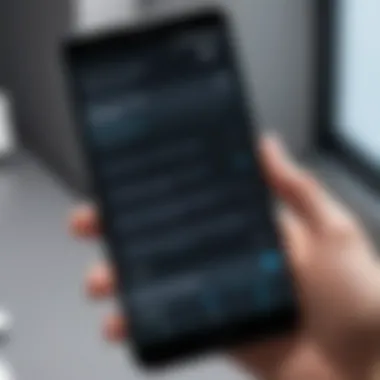

For efficient editing, consider using applications like AZ Screen Recorder or DU Recorder, which provide built-in editing tools or easily integrate with external editing software. Having well-edited content can significantly improve viewer retention.
Sharing Options for Screen Recordings
Once your recording is ready, sharing it correctly is vital. Utilizing efficient sharing options helps you reach your intended audience and ensures maximum exposure of your content.
Here are popular options to consider:
- Social Media Platforms: Such as Facebook, Reddit, or Twitter.
- Cloud Storage: Services like Google Drive or Dropbox allow for easy distribution and access.
- Direct Links: Sending recordings via email or messaging apps can be effective for private sharing.
While sharing, take care to determine your audience and tailor your messaging accordingly. This consideration can improve engagement.
Remember, a great recording is only as good as its delivery. Consider these post-recording actions to maximize the impact of your screen recordings.
Best Practices for Effective Screen Recording
Recording your phone screen effectively requires more than just pressing a few buttons. To produce high-quality recordings, it is essential to follow best practices that enhance both the process and the final output. These practices help users achieve clear and professional results, minimizing interruptions and maximizing efficiency. Understanding these tips not only aids in better recordings but also prepares users for potential challenges they might face.
Optimizing Battery Usage
Screen recording can consume a significant amount of battery power. This consumption usually depends on the length of the recording and the quality of the video chosen. To ensure that your recording sessions do not abruptly end due to a drained battery, consider the following strategies:
- Charge your device: Before starting a recording session, ensure that your device is adequately charged. Ideally, it should be above 50% to minimize risk during long recordings.
- Close unnecessary applications: Background apps can drain battery life. Close any non-essential applications to reduce load on your device.
- Lower screen brightness: High brightness levels can accelerate battery drain. Reducing it to a comfortable level can help conserve power while recording.
- Enable Battery Saver mode: Most Android devices come with a battery saver feature. Using this mode during recordings can help prolong battery life.
By applying these strategies, you can carry out extended screen recording sessions without worrying about interruptions.
Enhancing Audio Quality
Audio quality is a crucial component of screen recordings. Clear audio improves viewer engagement and comprehension, making it essential to optimize sound settings. Here are a few methods to ensure audio quality remains high:
- Use an external microphone: If possible, utilize an external microphone to capture clearer sound. This is especially useful for voiceovers or detailed explanations.
- Check audio settings: Before starting, ensure your audio settings are correct. Confirm that the microphone is enabled if you're capturing audio while recording.
- Record in a quiet environment: Background noise can detract from the quality of the recording. Find a quiet space to improve sound clarity.
- Test audio levels: Conduct a quick test recording to check audio levels, making adjustments as necessary before the actual session.
Following these best practices allows not only for smoother recording experiences but also improves the final output significantly. Well-optimized recordings make for better presentations and enhance the experience for viewers.
Effective screen recordings require attention to details such as battery usage and audio quality.
Common Issues with Screen Recording
Screen recording is a useful feature for many, but it is not without its challenges. Understanding these common issues can significantly enhance the user experience. Knowing what to expect helps users troubleshoot effectively, avoiding frustration and maximizing efficiency. This section discusses common problems that arise during screen recording and how to resolve them.
Troubleshooting Recording Problems
Occasionally, users may encounter issues when trying to record their screens. These problems can disrupt the recording process, leading to incomplete or poor-quality recordings. Here are some common difficulties and their solutions:
- App Crashes: Some apps may not function well with screen recording. Ensure that both the screen recording app and the application being recorded are updated.
- Black Screen: If the recording displays a black screen, it might be due to permissions. Check that the screen recording app has the necessary permissions to capture screen content.
- Low Quality Recording: Users often find recordings lacking in clarity. Adjust the resolution settings in the recording app to improve video quality. This can usually be found in the settings menu of the app.
- Audio Issues: Sometimes audio is not captured during recording. Verify that the audio settings are properly configured. Adjust the internal and external audio options as needed.
- Lagging Performance: If the phone becomes sluggish during recording, it could be due to limited system resources. Closing unnecessary applications and freeing up memory can help resolve this issue.
Dealing with Storage Limitations
Storage is a crucial factor in screen recording, as high-quality videos take up significant space. Users may encounter storage limitations that hinder their recording capabilities. Here are strategies to manage and resolve these concerns:
- Free Up Space: Regularly check the device's storage. Deleting unused apps, images, and videos can free up essential space for new recordings.
- Choose a Suitable Storage Location: Some apps allow you to select the storage location for recordings. Opting for an external SD card can alleviate internal storage constraints.
- File Compression: If you need to save space, use file compression tools to reduce the size of video files post-recording. This can be done through various video editing apps.
"Managing storage effectively ensures that your screen recording experience is smooth and hassle-free."
Understanding these common issues and their solutions equips users with the knowledge needed to navigate the complexities of screen recording. By taking the time to address these concerns, users can make the most of their screen recording capabilities on Android devices.
Culmination
The conclusion of this article serves to consolidate the various themes surrounding screen recording on Android devices. Throughout this guide, we explored numerous methods to effectively capture screen activity, emphasizing that screen recording is not simply a tech gimmick. It provides tangible benefits and plays a critical role in numerous scenarios, from creating tutorials to documenting bugs.
Recap of Key Points
In summary, we covered the following essential points:
- Definition and Importance: Screen recording is the process of capturing what is displayed on your device’s screen. It is highly useful for sharing instructional content and troubleshooting.
- Built-in Features: Many Android devices come equipped with native screen recording utilities that streamline the process without requiring additional apps.
- Third-Party Applications: If built-in tools are not sufficient for your needs, multiple reliable applications like AZ Screen Recorder, Mobizen Screen Recorder, and DU Recorder offer advanced functionalities.
- Post-Recording Actions: Reviewing, editing, and sharing recordings are equally important to maximize their usefulness after capturing.
- Best Practices: Keeping your device charged and ensuring audio clarity are vital for achieving high-quality recordings.
- Common Issues: Understanding troubleshooting techniques and storage limitations can help in avoiding frustration during recording.
Future of Screen Recording on Android
Looking ahead, the future of screen recording on Android appears promising. As Android evolves, we can anticipate several trends and improvements. Enhanced integration of AI technologies may provide smarter features, such as automatic editing or content suggestions based on recording themes. Furthermore, with more applications utilizing cloud technology, users might soon have easier access to their recorded content across devices.
Moreover, as user-generated content continues to grow across social platforms, demand for effective screen recording tools will likely rise. This can anticipate new features spotlighting customization and user preferences. As gadgets and applications keep evolving, so too will the methods and approaches for screen recording, making it an area to watch.







